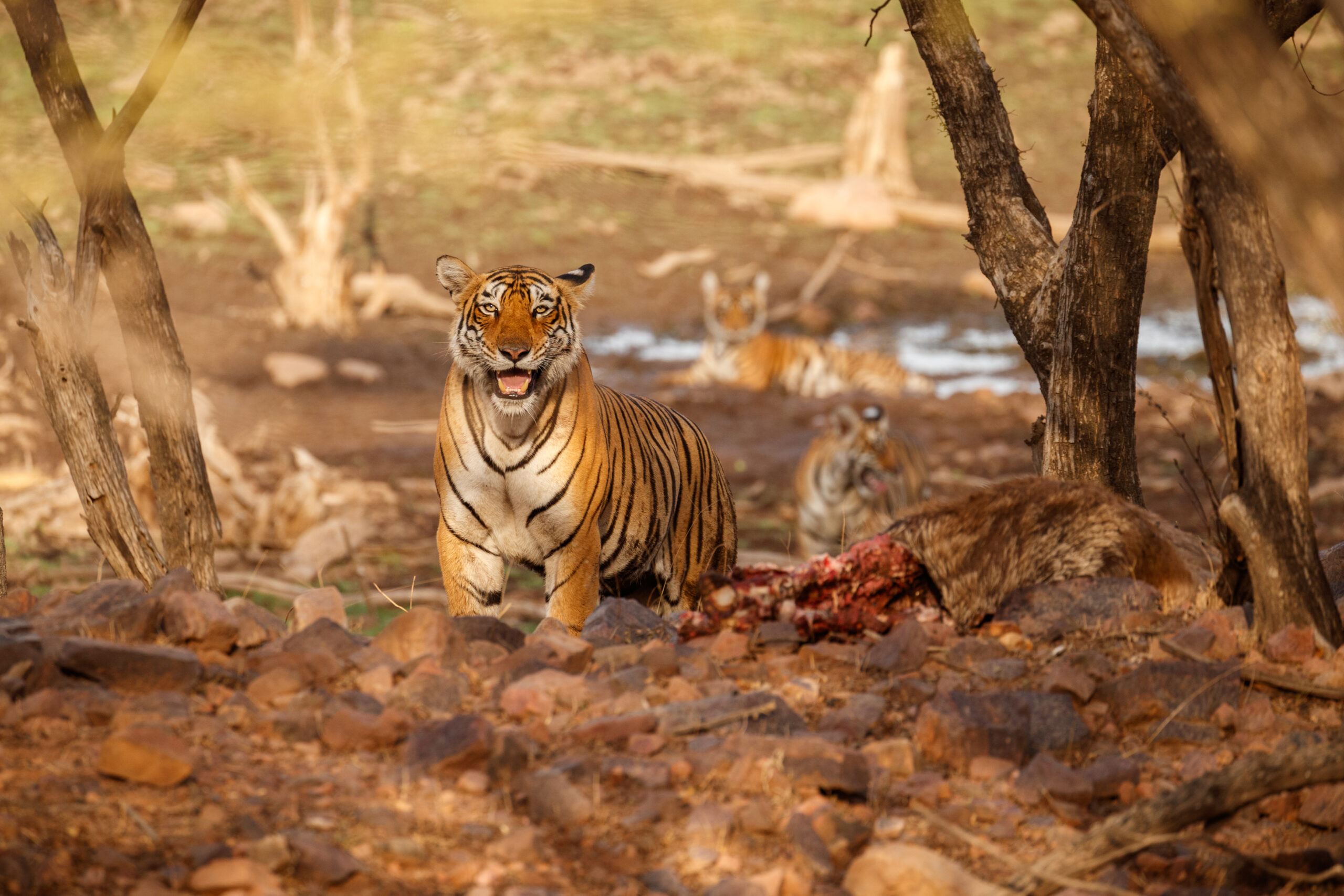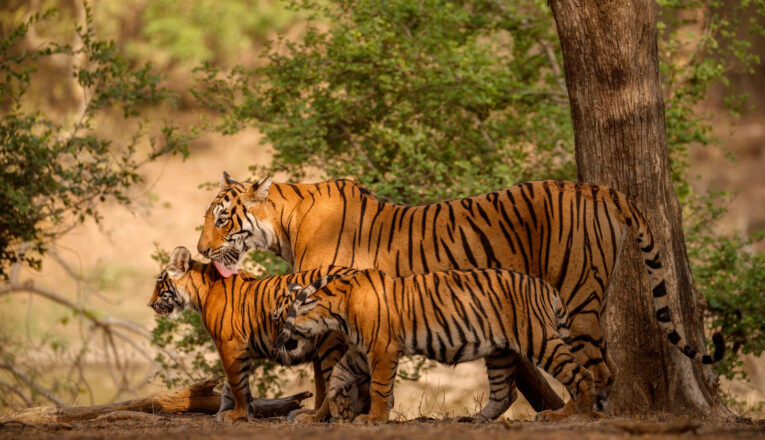Best Time to See Royal Bengal Tigers in Sundarbans
Sundarbans is a UNESCO World Heritage Site. This is the world’s largest delta comprising extensive and dense mangrove forests, tidal creeks, and mudflats. These mangroves span across India and Bangladesh; this singular ecosystem is a land of unadulterated, untamed nature, where the dense, impenetrable green gives way to the great currents of the Bay of Bengal. Traveling to the Sundarbans offers a glimpse into land ruled by Mother Nature and her forces.

Interesting Facts about the Sundarbans
- The World’s Largest Mangrove Forest: These mangroves stretch over 10,000 sq km (approximately 4,000 sq miles), between the border of India and Bangladesh.
- Tiger’s Special Habitat: The only place on earth that is home to man-eating tigers that have developed swimming skills in salt water.
- Tidal Waterways: The entire region consists of a dense and interconnected network of tidal rivers, channels, and creeks, accessible by boat only.
- Biodiversity Hotspot: These forests offer shelter to numerous species of wildlife animals, including saltwater crocodiles, various types of deer, and several species of birds.
Packing Essentials for a Successful Jungle Safari in Winter
To make your winter safari pleasant and productive, pack intelligently and strategically. Here’s a list of 6 tips to help you pack smartly for your Sundarbans trip:
- Warm Clothing: Jackets, sweaters, thermal wear, and woolen caps.
- Comfortable Footwear: Heavy-duty, non-slippery shoes or boots.
- Binoculars and Camera: So that you may spot wildlife from a distance and capture the moment.
- Sun Protection: Sunscreen and a wide-brimmed hat.
- Mosquito Repellent: It is extremely vital, as you will surely encounter insects.
- Personal Medications: Including motion sickness pills for your boat ride.
Best Time to Spot the Royal Bengal Tigers
The weather and temperature affect your chances of spotting the elusive Royal Bengal Tiger in Sundarbans. The undisputed best time to visit Sundarbans to spot the tiger is during the winter months, particularly between November and February/March. It is this time that the chilly, dry weather provides a number of benefits that make it ideal for game watching, especially for the tigers.
Read More:
Exploring the Natural Beauty of Sundarban
Other Perks of a Winter Trip to the Mangroves
Seasonal temperatures dip to a pleasant level, usually between 10 and 20 degrees Celsius. This nice weather forces all the wildlife, including the regal tigers, to go outdoors more often in order to enjoy the scarce sun. This habit is one of the main contributors towards maximizing your chances of a sighting.
Additionally, the winter low tide usually reveals huge patches of mudflats. Tigers tend to venture out from the dense forest and arrive on the banks of the river channels and creeks, or venture across the mudflats. The soft ground also preserves distinct pug marks (tracks), which expert guides can utilize to follow the tiger’s recent tracks, considerably reducing the area of search for the safari boats. The dry weather also ensures the river water levels tend to be lower and more consistent, enhancing boat access to some interior regions.
Key Benefits
- Cooler Temperatures: Tigers and other wildlife are more active and can be observed basking in the sun along the riverbanks or mudflats.
- Exposed Mudflats: Lower water levels expose mudflats, and it becomes easier to see tigers along the water’s edge or follow their pug marks.
- Comfortable Visit: The weather is most suitable for long hours on the boat, which is required for a successful safari.
- Better Visibility: The dry air offers perfect visibility along the extensive waterways and forests.
- Best Times of Day for Tiger Sightings
- During Early Morning (Sunrise to 10:00 AM): Tigers are most active during the start of the day. They bask in the sun or hunt during these hours.
- Late in the Afternoon (3:00 PM to Sunset): Tigers tend to come out of hiding during the late afternoon and sunset. The light is also great for photography at this time.
- During Low Tide: Scheduling your boat safari to coincide with the low tide will raise your chances of tiger sightings on the exposed mudflats.
- Tips for a Successful Tiger Safari
- Hire an Experienced Guide: Go for a local guide who is familiar with the exact tidal pattern, recent sighting locations, and interpreting the pug marks and animal warning calls.
- Always Maintain Silence: Talk softly and keep noise levels to an absolute bare minimum on the boat. Loud sounds will drive the animals off.
- Spend More Time: Take at least 3-4 days in the Sundarbans. Greater time on the water greatly enhances the chances of a sighting.
- Be Patient: Tiger sightings are not common; expect prolonged periods of watching and appreciate the scenery of the surrounding forest and other wildlife.
- Follow All Rules and Safety Precautions: Stick to the forest department’s rules, such as staying within marked areas and never trying to feed or harass the animals.
- Work the Water Edges: Closely observe the dense mangrove edges because the tiger tends to be only partly visible in the foliage yet near the water.




